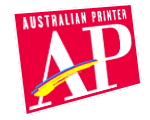
Professor Peter Danaher will reveal his findings on the effectiveness of mail at the Major Mail Users Convention and Partners On Show Exhibition, to be held in August this year.
Professor Danaher has recently completed a comprehensive research project on behalf of Australia Post, and is expected to shed light on the future of mail in direct marketing in Australia.
Giving Australian Printer Magazine a preview of his talk, Danaher says; it is important mail is analysed for its effectiveness in marketing. He says his study will help resolve the problem marketers have in making the right choice about their marketing strategies.
“Because of the rise of digital technology, marketing managers have many more options then ever before. The problem is, they also have the same budget as they’ve always had, and have to decide how to spend it.” “The purpose of the study, I’ll be talking about at Major Mail Users, is to look and see how mail is affected by this, and give marketers the facts about the most effective type of media, so that they can make an informed decision,” says Danaher.
His research entitled ‘A Comparison of the Effectiveness of Marketing Communication Channels: Perspectives from both Receivers and Senders’ is the culmination of a comprehensive research project conducted by him in Australia, in August-September of last year.
The project which was split into two parts, firstly, asked a number of recipients to rate their reactions to 11 different forms of media marketing channels. Respondents were asked to select from 14 different adjectives to rate three media channels, to which they were exposed. Danaher says the results showed a definite preference for more traditional forms of marketing, such as television and mail.
“The results came out fairly black and white, says Danaher. “On the bad side was door to door, telephone, text messaging and email, and these channels were described as unethical, disruptive, time-consuming and annoying,” he says.
“On the other side of the coin, are channels such as mail, newspaper and television, and the words used to evaluate them are reliable, trustworthy, and enjoyable appropriate and entertaining,” says Danaher.
This part of the study also examined the senders of advertising of various channels, and asked them to rate what they thought was the effectiveness of the media channels they were using. Danaher says the sender results showed some interesting mismatches between what they thought was effective marketing and what the receivers thought about marketing through the same media channels.
“What we found was that there were some pretty major mismatches between the senders and receivers," he says. "For instance, the results showed that the senders of door to door, telephone and text messaging generally realised what they were doing was irritating to the senders, but they didn’t think email was irritating, yet the receivers did,” he explains.
Part two of the study, which tested the receiver’s reaction to two different types of marketing campaigns through the different media channels - one for a plasma TV marketing campaign and the other for a superannuation scheme - confirmed the previous results that traditional mass media such as television, direct mail and print were more effective.
By unveiling the findings of his research project, which examines the role of paper, electronic, mass media and other communication channels in the future, Danaher hopes to dispel some common misconceptions about the effectiveness of different forms of marketing.
“One of the things I’m hoping to do is to highlight some of the misunderstandings about the different forms of media available to marketers and their use. Yes it’s true that some forms of media are cheaper to use, such as SMS and email, but how are they received by the consumers? The answers may just surprise you,” says Danaher.
Tags:

 Andrew Tribute
Andrew Tribute










